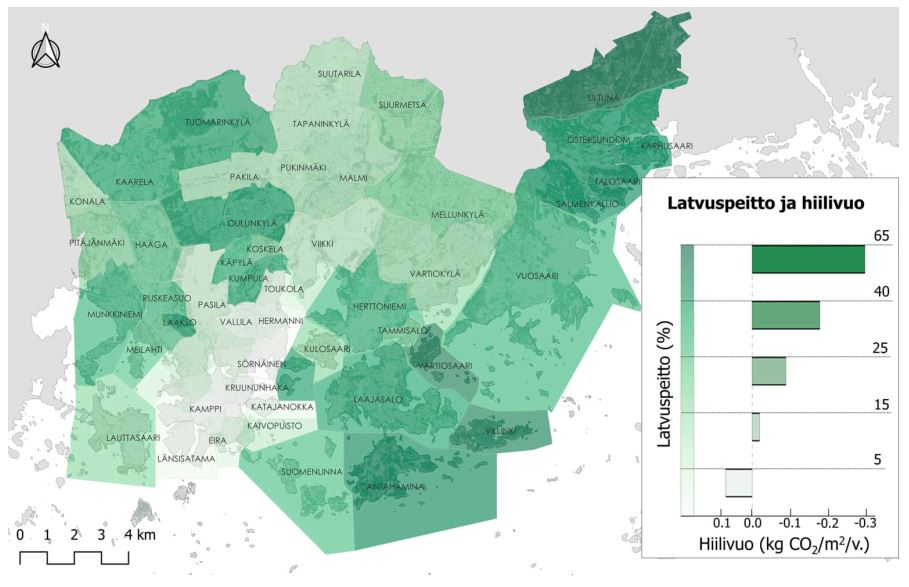The urban green in Helsinki is not distributed evenly. The canopy coverage (area covered by arborescent vegetation of more than 2 metres in height) varies by city district from 3.6 to 63 percent. A darker tone indicates more canopy coverage. The areas begin to serve as distinct carbon sinks when the canopy coverage exceeds 15%–25%. Image: Antti Kinnunen (Source: HSY land cover data, University of Helsinki carbon flux data)
To date, urban planning has failed to pay due consideration to urban carbon sinks and the numerous other benefits of urban green. In the article written by Ranja Hautamäki and Mari Ariluoma for Finnish Architectural Review, ways are brought forth for architects and landscape architects to promote carbon smartness.
The article highlights how sinks have received a lot of attention especially in forestry, but they are also important in the urban environment and thus in the field of green environment designers. According to the results of our CO-CARBON research project, in Helsinki, for example, slightly less than half of the carbon sequestration is based on urban forests and the rest on other green structures. In addition, the article discusses other themes that have been neglected in the carbon debate, such as the importance of soil as carbon storage.
In the article, the possibilities for promoting carbon wisdom are summarized in three cornerstones: preserving carbon stocks, increasing sinks and aiming for low emissions. Preservation emphasizes the importance of existing green environments and the versatility of urban green as well as the locality of the other benefits of urban green. When adding sinks, both the growing medium and the species to be planted and their density are important. Low-emission maintenance and construction methods, in turn, require the development of a life cycle assessment of the green sector. In addition, the article discusses the means of steering towards carbon smartness at different planning levels.
Read more: Finnish Architectural Review 1/24
